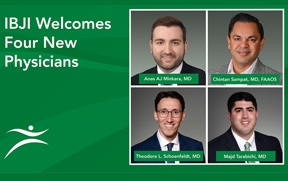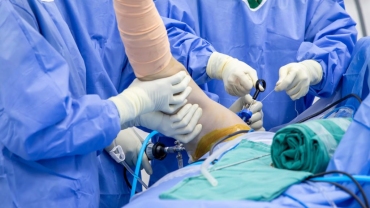Chicago Bears’ QB Brings Thumb Injuries To Light
Last Sunday, the Chicago Bears quarterback, Jay Cutler, experienced a painful fracture to his thumb. Just a week before Ben Roethlisberger, the QB for the Pittsburgh Steelers had a similar injury occur.
While this is bad news to both teams, it does bring up how these painful injuries occur and are treated. Without specific knowledge of the extent of both QB’s injuries it is impossible to discuss their specific case, but we can discuss these traumatic injuries in general.
While pain is an important aspect of the injury, the potential for further complications is worse. Thumb injuries can be life changing due to a diminished ability to grasp objects and an increased chance for arthritis to affect the joint. To reduce the potential for injury, as well as the ongoing implications if an injury should occur, it is important to understand how a thumb can be fractured and what potential treatments are available.
How Does A Thumb Get Broken?
A thumb seems like a pretty stout structure at first glance. It has one fewer bones than the typical three found in the fingers and is usually thicker. Despite this, the thumb can be broken in a number of ways. The patient’s overall health, like calcium deficiency, of course affects the chances of injury. A more severe type of fracture in the thumb is one that occurs near a joint. The worst type of fracture is one that also damages the ligaments.
In some cases breaks are caused by fall or an object being forced backward which pulls the thumb toward the forearm. Another potential mechanism for breaks occurs when the thumb is twisted forcibly. Either of these types of break could be caused by a football being blocked in the middle of a quarterback’s throwing motion. Of course you don’t need to be a football player to injure your thumb. There are numerous other activities that have the potential to cause damage to the thumb including construction, skiing, and even shoveling snow on icy pavement.
Typical Treatment Of Broken Thumbs
The first thing that will occur in suspected breaks is an x-ray, and potentially a CT scan if the fracture is not apparent in the x-ray. The most ideal of circumstances the bones have not moved around much. This allows the orthopedic physician to set the bone or move the damaged end into alignment, and allowing the orthopedist to use a specially designed cast to immobilize the joint without the need for surgery.
Surgery Is Sometimes Needed
In the most severe cases, like that of Cutler, thumb surgery is sometimes the only option. If the ligaments are damaged or the surgeon cannot align the bones externally your orthopedic physician may suggest surgical treatment. In most cases the surgery involves the use of screws and wires to put the thumb back into alignment. Even with surgery some sort of external immobilization, like a cast or splint, will be used for as long as six weeks.
Where To Find Treatment
Ben Roethlisberger and Jay Cutler are professional athletes with an entire football team’s group of medical staff and specialist supporting them in their recovery. Even though most people are not part of a professional sports franchise, they still can get incredible care from a great team. The Illinois Bone and Joint Institute provides its patients with access to more dedicated nurses, orthopedic physicians, and specialists than are available to an NFL athlete. The staff at IBJI are only interested in treating the patient in the most effective and caring way possible not in winning games or Superbowl rings. It’s clear that IBJI is the best place to get top-notch orthopedic care in Chicago. Schedule online right now with one of our highly trained orthopedic physicians and get access to a care that rivals the biggest professional sports organizations.
*This content is for information only and is not intended to replace the diagnosis, treatment, or medical advice from your treating healthcare professionals. The content does not provide medical advice, does not constitute the practice of medicine or other healthcare professional services, and does not create a doctor-patient relationship. You should not rely on this information as a substitute, nor does it replace professional medical advice, diagnosis, or treatment. If you have concerns or questions, seek the advice of your healthcare professionals. If you think you may have a medical emergency, call your doctor or 911 immediately. Do not rely on electronic communications or communicate through this website for immediate, urgent medical needs. This website is not designed to facilitate medical emergencies. The use of the information is at the reader’s own risk. The links are provided for information and convenience only. We cannot accept responsibility for the sites linked or the information found here. A link does not imply an endorsement of a site.




